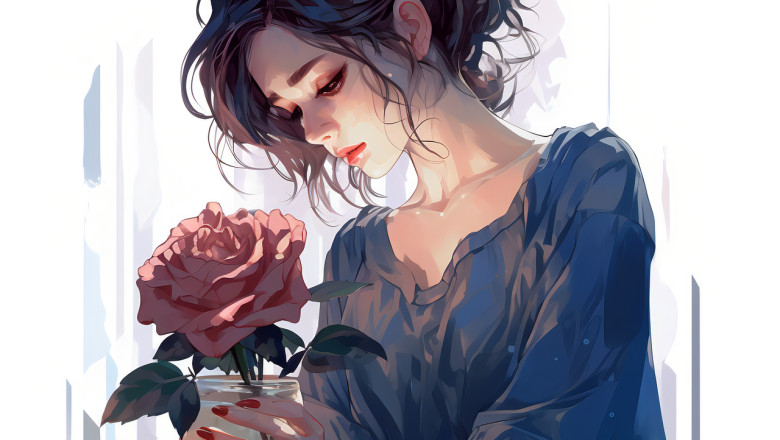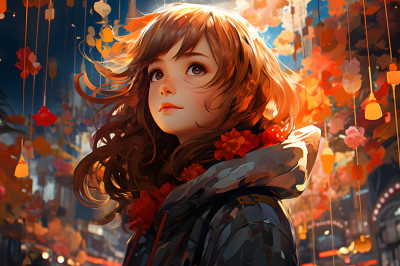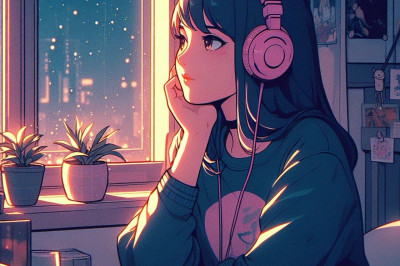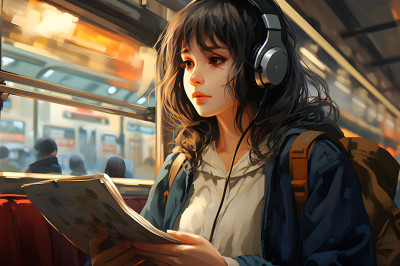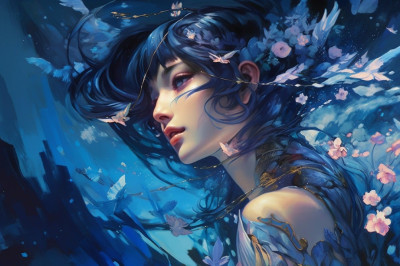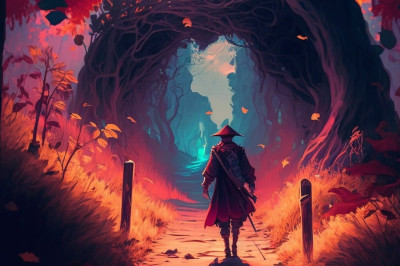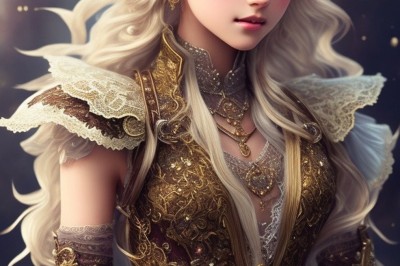Understanding Anime Fandom Culture
Anime fandom culture is a vibrant and dynamic community that has grown significantly with the global spread of Japanese animation, known as anime. This culture is characterized by passionate fans who engage with anime through various activities and expressions of fandom.
The Roots of Anime Fandom
Anime fandom originated in Japan but quickly spread to other parts of the world. The culture took root in the West in the late 20th century, as fans began to organize around their shared interest in anime series and films. Early fans would trade VHS tapes and fan-subtitled content, laying the groundwork for the community-driven aspects of the culture.
The Role of Conventions
Conventions are a cornerstone of anime fandom, providing a physical space for fans to gather, share their passion, and celebrate their favorite series and characters. These events range from small local gatherings to large international expos, featuring panels, screenings, and guest appearances by creators and voice actors.
The Evolution of Anime Conventions
Over the years, anime conventions have evolved from simple fan meetups to elaborate events. They now often include a wide range of activities, such as cosplay contests, merchandise sales, art exhibitions, and gaming tournaments.
The Cosplay Phenomenon
Cosplay, a portmanteau of "costume play," involves fans dressing up as their favorite anime characters. This form of self-expression has become an integral part of anime fandom, with many fans spending considerable time and resources on creating detailed and accurate costumes.
Crafting and Creativity in Cosplay
Cosplayers often showcase their creativity and craftsmanship by constructing their costumes from scratch. This process can involve sewing, prop-making, and makeup artistry, demonstrating a high level of dedication to the fandom.
Fan Art and Doujinshi
Anime fandom is also known for its prolific creation of fan art and doujinshi (fan-made manga). These works allow fans to express their love for anime through their own artistic talents, often sharing their creations online or selling them at conventions.
The Impact of Fan Creations
Fan art and doujinshi can influence the anime industry itself, with some fan artists gaining recognition and even employment within the industry. These creations also contribute to the rich tapestry of the fandom, offering new interpretations and stories based on beloved characters.
Online Communities and Streaming
The rise of the internet and streaming services has transformed anime fandom, making it easier for fans to access content and connect with each other. Online forums, social media groups, and video platforms have become hubs for discussion, fan works, and community building.
The Globalization of Anime Fandom
With the advent of online streaming, anime has reached a wider audience than ever before, leading to a more diverse and global fandom. This accessibility has facilitated the growth of the culture and allowed fans from different parts of the world to participate in the fandom.
The Language of Fandom
Anime fandom has its own unique language, with terms like "otaku," "weeb," and "sub vs. dub" being commonplace within the community. Understanding this lingo is part of immersing oneself in the culture and connecting with other fans.
Memes and Slang
Memes and slang terms often emerge from popular anime series and become part of the fandom's vernacular. These expressions can serve as a form of bonding among fans and are a testament to the culture's dynamic and evolving nature.
Merchandise and Collectibles
Collecting merchandise, such as figures, posters, and other memorabilia, is another way fans engage with anime fandom. This aspect of the culture allows fans to physically own a piece of their favorite series and support the creators.
The Economy of Fandom
The demand for anime-related merchandise has led to a thriving industry, with companies producing a wide array of products for fans to purchase. This economy not only supports the anime industry but also allows fans to display their fandom in their everyday lives.
The Rise of Anime Conventions: A Global PhenomenonOrigins and Evolution of Anime Conventions
Anime conventions began as small, fan-run events where enthusiasts of Japanese animation and comics could gather to share their interests. The first recorded anime convention, Comiket, started in Tokyo in 1975 and primarily focused on doujinshi, self-published works by amateur artists. In the United States, one of the earliest anime conventions was AnimeCon, held in 1991 in San Jose, California, which later evolved into what is now known as Anime Expo.
Over the years, these conventions have grown from niche gatherings to massive events that attract thousands of attendees from all over the world. The evolution of anime conventions is marked by increasing professionalism in their organization, a broader range of activities and panels, and the inclusion of industry guests such as voice actors, directors, and artists.
The Role of Anime in Popular Culture
Anime's surge in popularity outside of Japan in the late 1990s and early 2000s played a significant role in the proliferation of anime conventions globally. Shows like "Dragon Ball Z," "Sailor Moon," and "Pokémon" became cultural phenomena, creating a demand for more content and community experiences. As anime became more mainstream, conventions expanded their scope to include not just anime but also manga, video games, and other aspects of Japanese pop culture.
Geographic Expansion and Diversity
Initially concentrated in Japan and North America, anime conventions have spread to Europe, South America, Asia, and beyond. Events like Japan Expo in France, Anime Friends in Brazil, and MCM London Comic Con in the UK are testament to the global reach of anime fandom. Each region brings its own unique flavor to the conventions, often blending local culture with the traditional elements of an anime con.
Economic Impact and Industry Involvement
The growth of anime conventions has had a notable economic impact, with events contributing to local tourism and providing a significant revenue stream for the anime industry. Major studios and distributors now see conventions as prime opportunities for marketing new releases and engaging directly with fans. Exclusive screenings, merchandise, and announcements have become a staple at these events, further cementing their importance to the industry.
Community and Fandom
Anime conventions serve as a hub for the anime community, providing a space for fans to meet, socialize, and express their passion for the medium. Cosplay, where attendees dress up as their favorite characters, has become an integral part of the convention experience. These gatherings also foster a sense of belonging and have given rise to fan-driven initiatives such as charity events, fan art exhibitions, and collaborative projects.
The Digital Age and Virtual Conventions
With the advent of the internet and social media, the way fans engage with anime and conventions has transformed. Online communities and live-streaming services have made it possible for fans to participate in conventions remotely. The COVID-19 pandemic accelerated this trend, leading to the rise of virtual conventions. These online events have allowed for continued engagement in the anime community despite physical distance, and they have expanded the reach of conventions to a global audience that might not have the means to attend in person.
Challenges and Adaptations
As anime conventions continue to grow, they face challenges such as overcrowding, security concerns, and the need for greater inclusivity. Organizers have adapted by implementing advanced ticketing systems, increasing venue sizes, and fostering an environment that is welcoming to all fans, regardless of background. The conventions of the future will likely continue to evolve, addressing these challenges while enhancing the fan experience through technology and innovation.
Cosplay: The Art of Transformative ExpressionThe Roots of Cosplay
Cosplay, a portmanteau of "costume play," is a performance art where participants, known as cosplayers, wear costumes and fashion accessories to represent a specific character from a movie, book, video game, or comic. Originating from the fan culture of Japan, cosplay has become a global phenomenon, allowing fans to express their admiration for a character and immerse themselves in a beloved fictional universe.
Crafting Identities
Cosplayers often invest significant time, money, and effort into creating their costumes. This process involves a deep understanding of the character being portrayed, including their personality, attire, and mannerisms. The act of crafting a costume can range from simple thematic clothing to elaborate, screen-accurate outfits that may require advanced skills in sewing, prop making, and makeup.
Sewing and Fabrication
Many cosplayers learn to sew to create their costumes. They choose fabrics that closely match the textures and colors of the original design. Some may even learn advanced techniques like embroidery, leatherworking, or thermoplastic molding to add intricate details to their costumes.
Prop Making
Characters often have iconic weapons or accessories that are integral to their identity. Cosplayers use a variety of materials such as foam, resin, and 3D printing to create these items, ensuring they are both accurate and safe for public display.
Makeup and Special Effects
Makeup is another crucial aspect of cosplay. It can alter a person's appearance to resemble a character's facial features, skin tone, or even species. Special effects makeup can also be used to simulate injuries, aging, or otherworldly elements.
The Performance Aspect
Cosplay is not just about dressing up; it's also about embodying the character. This can include mimicking their voice, gestures, and overall demeanor. Some cosplayers go further by participating in skits or performances at conventions, adding a theatrical dimension to their cosplay.
Photography and Visual Storytelling
Cosplayers often collaborate with photographers to create stunning visuals that bring their characters to life. These photoshoots can recreate scenes from the source material or invent new scenarios, contributing to the narrative surrounding the character.
Community and Collaboration
The cosplay community is a supportive and creative space where individuals share tips, celebrate each other's work, and collaborate on group costumes or themed photoshoots. Social media platforms have allowed this community to thrive, connecting cosplayers from around the world.
Tutorials and Workshops
Experienced cosplayers often share their knowledge through tutorials or workshops, helping others to improve their skills. These resources cover a range of topics, from basic sewing to advanced armor construction.
Group Cosplay
Group cosplay involves multiple people coordinating their costumes to represent a set of characters from the same series. This collaboration requires careful planning and communication but results in a powerful collective expression of fandom.
Inclusivity and Personal Expression
Cosplay is an inclusive activity that welcomes participants of all ages, body types, and backgrounds. It is a form of personal expression that allows individuals to explore different facets of their identity and to step into the shoes of someone else, if only for a little while.
Gender Bending and Crossplay
Cosplayers may choose to portray characters of a different gender, known as gender bending or crossplay. This practice challenges traditional gender norms and celebrates the fluidity of identity.
Original Characters and Fan Art
Some cosplayers create costumes based on original characters or fan art interpretations. This allows for even greater creativity, as cosplayers are not limited to existing designs and can bring their unique visions to life.
The Impact of Cosplay on Popular Culture
Cosplay has influenced the entertainment industry, with creators acknowledging and sometimes incorporating cosplayers' interpretations into official media. It has also impacted fashion, with elements of cosplay filtering into everyday wear through "casual cosplay" or "cosplay-inspired" clothing lines.
Cosplay in Media
Characters are now often designed with cosplay in mind, and some companies engage with the cosplay community for promotional events, recognizing the power of these passionate fans.
Casual Cosplay
Casual cosplay involves incorporating elements of a character's costume into everyday fashion. This subtler form of cosplay allows fans to express their fandom in a more understated manner.
The Creative Economy of Anime Fandom: Merchandise, Art, and FanfictionMerchandise: Fueling the Fandom and Economy
The anime industry has seen a significant boost through the sale of official merchandise. This includes a wide array of products such as figures, clothing, posters, and home decor. Collectible items, particularly figures, are a cornerstone of the merchandise market, with some rare pieces becoming highly sought after by fans and collectors alike. Clothing and apparel featuring anime characters or logos allow fans to express their affinity for a particular series or character in their everyday lives.
The sale of merchandise is not limited to official channels. Unofficial merchandise, often created by fans themselves, is a thriving subset of the anime economy. These fan-made products can range from handmade crafts to professionally produced items. They are commonly sold at conventions, through online marketplaces, and at specialty stores, creating a parallel economy that both competes with and complements the official merchandise market.
Art: A Canvas for Expression and Entrepreneurship
Fan art is a vital expression of fandom, with many fans creating their own artwork inspired by their favorite anime. This art is shared on social media, personal websites, and at conventions. Some fan artists gain significant followings, allowing them to monetize their work through commissions, prints, and digital sales. The rise of platforms like Patreon has also enabled artists to receive direct support from their fanbase, further contributing to the creative economy.
Doujinshi, or fan-made manga, are another form of artistic expression within the anime community. These works can range from original stories set in the anime’s universe to complete reimaginings of the source material. Doujinshi creators often sell their work at conventions or through online stores, and while some doujinshi are created purely for the love of the medium, others become profitable ventures for the artists involved.
Fanfiction: The Narrative Playground
Fanfiction allows fans to explore and expand the universes of their favorite anime in written form. It provides a platform for fans to express their creativity, delve into character development, and explore "what if" scenarios that are not addressed in the original works. Websites like Archive of Our Own and FanFiction.net host millions of fan-written stories, demonstrating the vast and active community of writers and readers.
While fanfiction is generally a non-commercial endeavor, it plays a significant role in the creative economy by fostering engagement and keeping fandoms alive between anime seasons or after a series has ended. Some fanfiction writers have gained considerable recognition for their work, leading to opportunities in professional writing. In rare cases, fanfiction can become so popular that it is published and sold commercially, though this is often a complex process due to copyright laws.
The creative economy of anime fandom is a testament to the passion and entrepreneurial spirit of its members. From merchandise to art to fanfiction, fans are not just consumers but active participants who contribute to the richness and diversity of anime culture. Through their creativity and dedication, they ensure that the anime fandom remains a vibrant and evolving community.
Community and Identity: Finding Belonging in FandomThe Role of Shared Interests in Forming Bonds
Anime fandom culture is a vibrant and inclusive community where individuals with shared interests come together to celebrate their passion for anime. The foundation of this community is built on the common love for Japanese animation, which transcends geographical, cultural, and social barriers. Fans find camaraderie and connection through their mutual appreciation of anime series, characters, and genres. This shared interest is the catalyst for forming strong bonds and friendships within the community.
Cosplay as a Means of Self-Expression and Identity
Cosplay, short for "costume play," is a significant aspect of anime fandom where individuals create and wear costumes to represent a specific anime character. This practice allows fans to express their admiration for a character and to embody aspects of their personality or story. Through cosplay, fans explore their identity, often finding confidence and self-acceptance. The act of cosplaying creates a visible and dynamic way for individuals to connect with others who recognize and appreciate the character they are portraying.
The Impact of Conventions on Community Building
Anime conventions serve as a physical space where the fandom can converge and interact in person. These events are pivotal in strengthening the sense of community as fans participate in panels, screenings, workshops, and meet-and-greets. Conventions provide a platform for fans to share their knowledge, experiences, and to engage in discussions about their favorite anime. The communal atmosphere of conventions fosters a welcoming environment where fans can find others who share their interests and form lasting relationships.
Online Fandom: Virtual Spaces for Connection
In the digital age, online platforms have become an integral part of the anime fandom experience. Social media, forums, and streaming services offer virtual spaces where fans can connect, discuss, and share content regardless of physical location. These online communities are essential for fans who may not have access to local fan groups or conventions. They provide a space for ongoing engagement with the fandom, allowing for the discovery of new anime and the continuation of discussions beyond the confines of events and meetups.
The Significance of Fan Creations in Fostering Community
Fan creations, including fan art, fan fiction, and AMVs (Anime Music Videos), are a testament to the creativity and talent within the anime fandom. These works allow fans to contribute their own interpretations and narratives to the anime they love. Sharing these creations with the community can lead to recognition, collaboration, and the formation of special interest groups within the larger fandom. The encouragement and feedback from fellow fans often reinforce a sense of belonging and validation for creators.
Inclusivity and Diversity within the Fandom
Anime fandom is known for its inclusivity, embracing fans from diverse backgrounds. The community's diversity is reflected in the wide range of anime genres that appeal to different tastes and interests. This inclusivity promotes a culture of acceptance and understanding, where fans can be themselves without fear of judgment. The diversity within the fandom also leads to a rich exchange of perspectives, enhancing the overall experience of being part of the anime community.
The Role of Merchandise in Expressing Fandom Affiliation
Merchandise such as figures, clothing, and accessories allow fans to outwardly express their affiliation with the anime fandom. Owning and displaying merchandise serves as a conversation starter and a way to identify fellow fans in everyday settings. The exchange and trade of merchandise can also be a social activity that strengthens connections within the community.
Challenges and Support Systems within the Fandom
While the anime fandom is largely positive, it is not without its challenges. Issues such as gatekeeping or disagreements over interpretations can arise. However, the community often comes together to support its members through these challenges. Support systems, such as mentorship for novice cosplayers or fan groups that advocate for respectful discourse, play a crucial role in maintaining the welcoming nature of the fandom.
Through these various facets, anime fandom culture provides a space where individuals can explore their identity and find a sense of belonging. The community's shared passion for anime becomes the foundation for deep connections and a supportive network that celebrates creativity and individuality.
The Impact of Social Media on Anime Fandom DynamicsEnhanced Connectivity and Community Building
Social media platforms have revolutionized how anime fans connect and build communities. Through platforms like Twitter, Facebook, Reddit, and Discord, fans from all over the world can share their passion for anime. These platforms facilitate discussions, fan theories, and sharing of fan-created content, such as fan art and fan fiction. They also enable fans to organize and participate in watch parties, creating a sense of unity and shared experience.
Rise of Cosplay Culture
Social media has significantly amplified the visibility of cosplay. Platforms like Instagram and TikTok have become showcases for cosplayers to share their creations. The visual nature of these platforms allows cosplayers to gain followers, receive feedback, and connect with other enthusiasts. This exposure has led to some cosplayers achieving celebrity status within the community, with some even turning their passion into a profession through sponsorships and guest appearances at conventions.
Anime Influencers and Content Creators
The anime community on social media has given rise to influencers and content creators who specialize in anime-related content. These individuals create reviews, analysis videos, and other content that can influence the opinions and viewing habits of their followers. They often engage with their audience through comments and live streams, further influencing the dynamics of the fandom.
Viral Trends and Memes
Anime-related memes and trends often go viral on social media, contributing to the spread of anime culture and increasing its mainstream appeal. These trends can originate from iconic scenes, dialogues, or even out-of-context screenshots that resonate with the audience. The virality of these memes helps to introduce anime to potential new fans and serves as an inside joke for the existing community.
Marketing and Promotion Strategies
Anime studios and distributors have recognized the power of social media in reaching and engaging with fans. Official accounts for anime series and movies use these platforms to release trailers, announce new seasons, and engage with the audience through polls and interactive content. This direct line of communication allows for immediate feedback from fans and helps to build anticipation for upcoming releases.
Fandom Gatekeeping and Toxicity
While social media has many positive impacts on anime fandom, it also has a darker side. Gatekeeping, where some fans attempt to exclude or belittle others based on their perceived lack of knowledge or dedication to the genre, is prevalent. Social media can amplify these negative behaviors, leading to toxic fandom dynamics. However, there are also many initiatives within the community to combat this toxicity and promote inclusivity.
Globalization of Anime
Social media has played a crucial role in the globalization of anime. Fans are no longer limited to what is available in their local market; they can discover shows from different sub-genres and historical periods through recommendations and discussions online. This has led to a more diverse appreciation of anime as an art form and has encouraged the licensing and translation of a wider range of anime outside of Japan.
Challenges and Controversies within the Anime CommunityGatekeeping and Elitism
The anime community is not immune to gatekeeping, where certain individuals or groups decide who does or does not have access or rights to a community or identity. Elitism can manifest in various ways, from veteran fans looking down on newcomers for not having watched certain "essential" series, to debates over subbed versus dubbed content. This behavior can create an unwelcoming atmosphere for those new to anime, potentially stunting the growth of the community.
Representation and Cultural Appropriation
Anime is a Japanese medium, and with its global popularity, issues of cultural representation and appropriation frequently arise. Non-Japanese fans sometimes engage in cosplay that involves dressing up as characters from different ethnic backgrounds, which can lead to accusations of cultural insensitivity or appropriation. The community often grapples with how to celebrate and appreciate anime while respecting its cultural origins.
Fan Service and Objectification
Anime is known for its fan service—content that is designed to please fans, often through the inclusion of sexualized character designs and scenarios. This can lead to controversy, particularly regarding the objectification of female characters and the impact this may have on audience perceptions of gender roles. Discussions about the line between artistic freedom and harmful stereotypes are ongoing within the community.
Piracy and Intellectual Property Rights
Piracy is a significant challenge in the anime industry. Many fans access anime through unauthorized streaming sites or downloads, which can undermine the industry's financial stability and the ability of creators to earn a living. While some argue that piracy makes anime more accessible, it remains a legal and ethical issue that divides the community.
Localization and Censorship
As anime is localized for different regions, changes are often made to adapt content to different cultural norms and regulations. This can lead to censorship or alteration of the original material, which purists argue dilutes the creator's vision. Fans debate the balance between staying true to the source material and making anime accessible and appropriate for diverse audiences.
Toxic Fandom
Like many fan communities, the anime fandom can sometimes become toxic. Harassment, bullying, and aggressive behavior, both online and offline, can occur, particularly in discussions about contentious topics. This toxicity can deter fans from engaging with the community and negatively impact the overall perception of anime fandom.
Industry Exploitation and Labor Issues
The anime industry is notorious for its grueling work conditions and low pay for animators. This has led to discussions within the community about the ethics of supporting an industry that often exploits its workers. Fans and industry professionals alike are calling for better working conditions and fair compensation for the creators behind beloved anime series.
The Impact of Mainstream Acceptance
As anime becomes more mainstream, the community faces the challenge of how to integrate with broader pop culture. Some fans feel that the influx of new viewers dilutes the community's niche culture, while others welcome the increased diversity and recognition of anime as an art form. The tension between maintaining a unique subculture and embracing mainstream acceptance is a point of contention.
Queerbaiting and LGBTQ+ Representation
Anime often includes characters and relationships that fans interpret as LGBTQ+, but explicit representation is still relatively rare. Accusations of queerbaiting—where creators hint at, but do not confirm, LGBTQ+ representation to attract an audience—arise, leading to debates about the need for genuine representation and the handling of LGBTQ+ themes in anime.
Fandom Infighting and Ship Wars
Character relationships, or "ships," are a major part of fan engagement in anime. However, disagreements over which characters should be paired together can lead to "ship wars," where fans engage in heated debates and sometimes harassment campaigns. This infighting can create divisions within the community and detract from the enjoyment of the anime itself.
The Future of Anime Fandom: Trends and EvolutionsVirtual Reality and Augmented Reality Experiences
The integration of Virtual Reality (VR) and Augmented Reality (AR) technologies is set to revolutionize how fans engage with anime content. These immersive technologies will allow fans to step into the worlds of their favorite anime, interacting with characters and environments in a more intimate and tangible way. Future conventions could feature VR zones where attendees can experience new anime episodes or movies, or AR quests that overlay the convention experience with interactive anime-themed challenges.
The Rise of Virtual YouTubers and Streamers
Virtual YouTubers, or VTubers, have gained immense popularity, with characters like Kizuna AI leading the charge. This trend is likely to continue, with more fans following and interacting with anime-styled virtual personalities. These virtual celebrities are not only redefining entertainment but also becoming a significant part of the anime community, influencing trends and promoting anime culture globally.
Anime in Mainstream Media
Anime's influence on mainstream media is growing, with more anime-inspired shows and movies being produced in Hollywood and other film industries. This trend is expected to continue, with anime elements becoming more prevalent in Western storytelling and aesthetics. As a result, the fandom is likely to see an influx of new fans and a broader acceptance of anime culture in everyday life.
Expanding Global Accessibility
With the rise of streaming services and digital platforms, anime is becoming more accessible to international audiences. This trend will likely continue, with more platforms offering a wider variety of anime content, including niche and indie titles. The increased accessibility will foster a more diverse and global anime fandom, with fans from different cultures contributing their unique perspectives to the community.
Collaborative Fan Creations
The future of anime fandom will see a surge in collaborative fan projects, facilitated by online platforms and social media. Fans will not only consume content but also create it, working together to produce fan art, fan fiction, and even fan-animated episodes or spin-offs. These collaborative efforts will further blur the line between official content and fan-made creations, with some projects potentially gaining recognition from original creators and studios.
Sustainable Merchandising
As environmental concerns become more prominent, the anime fandom is likely to shift towards more sustainable merchandising practices. This could include the production of eco-friendly merchandise, digital collectibles, or the adoption of a second-hand market for anime goods. Fans will become more conscious of their environmental impact, choosing merchandise that aligns with their values.
Enhanced Convention Experiences
Anime conventions will continue to evolve, incorporating new technologies and experiences to enhance attendee engagement. This could involve interactive panels, holographic performances, or AI-driven experiences that personalize the convention journey for each attendee. Conventions may also expand their digital presence, offering virtual attendance options that include live-streaming panels and online vendor rooms.
Educational Opportunities
Anime fandom could become a gateway to educational opportunities, with institutions recognizing the cultural significance of anime. Courses on anime history, storytelling, and production might become more common, and anime clubs in schools and universities could serve as platforms for cultural exchange and learning. This educational aspect will not only deepen the understanding of anime as an art form but also foster a more knowledgeable and respectful fandom.
Healthier Fan Communities
The anime community is expected to become more inclusive and supportive, with a focus on creating safe spaces for fans of all backgrounds. Initiatives to combat harassment, bullying, and gatekeeping within the fandom will be more prevalent, leading to healthier fan communities. This positive evolution will encourage more people to join the fandom and share their love for anime without fear of judgment or exclusion.



